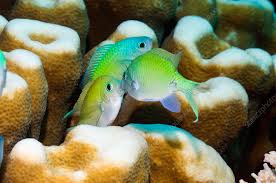In Chinese culture, the dragon (龙, Lóng) has long been a symbol of power, prosperity, and divine authority. Nowhere is this symbolism more evident than in imperial Chinese cuisine, where the dragon played a central role in shaping the aesthetics, ingredients, and presentation of royal dishes.

During the reign of emperors, imperial chefs meticulously crafted dishes that not only satisfied the palate but also reflected the grandeur of the ruling dynasty. The presence of dragon motifs in dish names, food presentation, and banquet settings was intended to reinforce the emperor’s heavenly mandate (天命, Tiānmìng) and his divine connection.
This article explores the significance of dragons in imperial Chinese cuisine, covering the symbolic meaning of dragon-themed dishes, the role of dragons in palace banquets, and how these traditions influence modern Chinese fine dining.
1. The Symbolism of the Dragon in Imperial Chinese Cuisine
1.1. The Dragon as a Representation of the Emperor
- In ancient China, the emperor was often referred to as the “True Dragon” (真龙, Zhēn Lóng), meaning that dragon-related imagery and themes were exclusive to the royal family.
- Many imperial dishes featured dragon names, emphasizing their prestige and exclusivity.
1.2. The Dragon and the Concept of Heavenly Mandate
- According to Confucian and Daoist philosophies, the emperor ruled under the Mandate of Heaven (天命, Tiānmìng), and dragons were seen as divine creatures that bestowed power upon righteous rulers.
- Serving dragon-themed dishes at royal feasts symbolized the emperor’s divine right to govern and the prosperity of the dynasty.
1.3. The Dragon as a Symbol of Harmony in Culinary Balance
- Imperial chefs followed the principles of Yin-Yang (阴阳) and the Five Elements (五行, Wǔ Xíng) in their cooking.
- Dishes that were inspired by the dragon balanced heat and coolness, sweetness and savoriness, reflecting the cosmic harmony that the emperor was believed to maintain.
2. Dragon-Themed Dishes in the Imperial Court
2.1. “Dragon and Phoenix” Dishes (龙凤呈祥, Lóng Fèng Chéng Xiáng)
- One of the most famous imperial dishes was Dragon and Phoenix, symbolizing balance and unity.
- The dragon represented the emperor, while the phoenix (凤, Fèng) symbolized the empress.
- Common versions included:
- Dragon and Phoenix Soup: A luxurious broth made from snake (symbolizing the dragon) and chicken (representing the phoenix).
- Dragon and Phoenix Prawns: A dish combining lobster (dragon) and chicken (phoenix), often served in royal banquets.
2.2. “Dragon Beard Noodles” (龙须面, Lóng Xū Miàn)
- This delicacy, characterized by extremely thin, silky strands of noodles, was believed to bring longevity and strength.
- The name originated from the legend that dragons had long, flowing beards, and these noodles were meant to resemble them.
2.3. “Dragon Pearl Rice” (龙珠饭, Lóng Zhū Fàn)
- A luxurious rice dish served in the imperial court, featuring round rice balls filled with rare ingredients such as abalone, shark fin, or bird’s nest.
- The rice balls were called “dragon pearls” because they resembled the mythical pearl that dragons guarded in legends.
2.4. “Dragon Fish” (龙鱼, Lóng Yú)
- A dish featuring imperial-grade fish (often carp or sturgeon), prepared in a symbolic dragon shape.
- The fish was often served whole, with elaborate garnishes resembling dragon scales and whiskers.
3. The Role of Dragons in Imperial Banquets
3.1. The Layout of Dragon-Themed Banquets
- State banquets for foreign diplomats and royal celebrations often featured dragon-themed menus.
- Banquet halls were adorned with golden dragon motifs, and tableware featured dragon engravings.
3.2. The Imperial Dragon Tableware and Serving Methods
- Only the emperor was allowed to use utensils featuring golden dragons.
- Royal chefs arranged dishes in dragon-shaped patterns to symbolize prosperity and strength.
3.3. Seasonal Dragon-Themed Banquets
- Spring Dragon Festival Banquets (龙抬头, Lóng Tái Tóu): Marking the beginning of spring, featuring seasonal vegetables and fresh seafood to symbolize renewal.
- Winter Solstice Dragon Feast (冬至龙宴, Dōngzhì Lóng Yàn): Served warm, nourishing dragon-themed dishes to promote strength during the cold season.
4. Dragon-Inspired Cooking Techniques in Imperial Cuisine
4.1. The “Dragon Fire” Cooking Method
- Some imperial dishes were cooked using extremely high flames, mimicking the fierce breath of a dragon.
- Dragon Fire Roasted Duck (龙焰烤鸭, Lóng Yàn Kǎo Yā) was an advanced variation of Peking duck, prepared over an intense open flame.
4.2. The “Dragon’s Breath” Steam Cooking
- Many imperial dim sum dishes were steamed in specially designed bamboo baskets with dragon carvings.
- This method was believed to infuse the food with auspicious energy.
5. The Influence of Imperial Dragon Cuisine on Modern Chinese Fine Dining
5.1. Michelin-Starred Restaurants Reviving Dragon Cuisine
- Many high-end Chinese restaurants today incorporate imperial-style dishes with dragon themes.
- Dragon Banquet Menus are served at luxury hotels, featuring dishes inspired by historical royal feasts.
5.2. Modern Interpretations of Dragon-Themed Dishes
- Fusion chefs reinterpret imperial recipes with modern plating techniques, such as:
- Dragon Prawn Tartare: Combining traditional dragon shrimp with French culinary techniques.
- Gold-Leaf Dragon Dumplings: Deluxe dumplings wrapped in gold foil, symbolizing dragon scales.
5.3. Dragon Symbolism in Luxury Chinese Tableware
- Exclusive Chinese fine dining establishments feature custom dragon-themed ceramics, silverware, and chopsticks to reflect imperial grandeur.
- Gold dragon patterns on plates and bowls indicate wealth and prestige, mirroring ancient palace traditions.
Conclusion: The Timeless Legacy of the Dragon in Imperial Chinese Cuisine
The dragon was not merely a mythological figure in ancient China; it was a powerful symbol woven into every aspect of imperial cuisine. From elaborate royal banquets to dragon-shaped dishes, the art of imperial cooking showcased the dragon’s role as an emblem of power, prosperity, and divine rule.
Today, the influence of dragon-inspired culinary traditions continues, with high-end Chinese restaurants and luxury dining experiences reviving the grandeur of imperial cuisine. Whether through modern adaptations of ancient dishes or the preservation of traditional dragon banquet customs, the dragon remains an enduring icon in Chinese gastronomy, symbolizing both cultural heritage and the pursuit of culinary excellence.
Leave a Reply